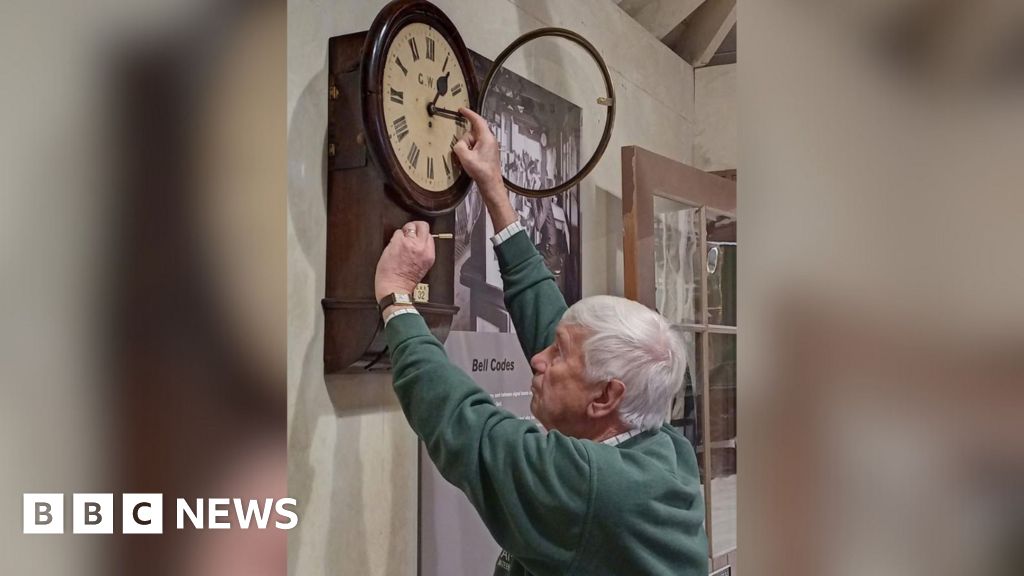Jonathan HolmesWest of England
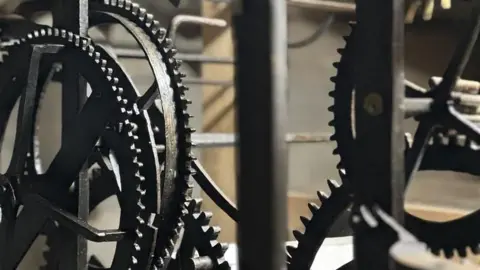 Diocese of Bath and Wells
Diocese of Bath and WellsWhile most will be enjoying an extra hour’s sleep as the clocks go back on Sunday morning, for those who look after them it is a busy time.
Across the West Country, people will be heading out to look after various antique mechanisms in church towers, train stations and more.
“It’s quite notorious that somebody will turn up an hour late or an hour early for church on Sunday, so we make sure someone is there at the ‘old’ time to make sure they aren’t locked out,” said Nick Lacock, church warden at St Catherine’s Church in Montacute, Somerset.
Mr Lacock is responsible for adjusting an ancient clock mechanism dating back to the 15th century, which was recently refurbished.
“It’s a huge responsibility and a great privilege to do it,” he added.
“At this end of the year it’s much easier. I stop the pendulum for an hour and then wait for an hour, but the 600-year-old mechanism has been absolutely brilliant and it settled down within a few days of the refurbishment.”
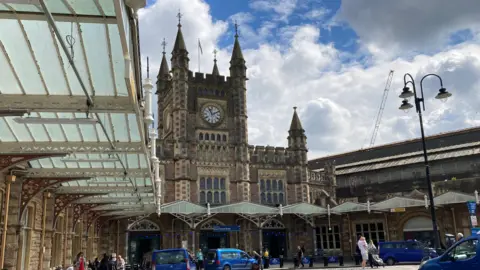
Millions of railway passengers glance up at Bristol Temple Meads’ station clock every year, with its huge 8ft (2.4 metre) dial.
Ironically, the historical mechanism powering it is known as a waiting train movement, a joke not lost on the sole person entrusted to look after it, horological engineer Andrew Nicholls from Bristol.
“As far as horology goes, it’s a modern clock as Temple Meads was bombed in the war and a new clock was installed afterwards,” he said.
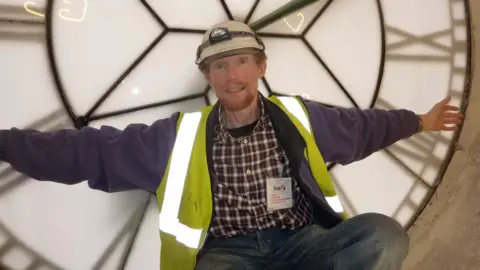 Andrew Nicholls, Tower Clocks
Andrew Nicholls, Tower Clocks“On Saturday, I do my rounds, going to London, then Reading, and finally to Bristol, and I put it back on Saturday night so people travelling on Sunday get the correct time.
“It’s a mixture of art and engineering.
“The old stuff can sometimes be temperamental so you need to know how to deal with it, and you are using techniques from a time gone by.”
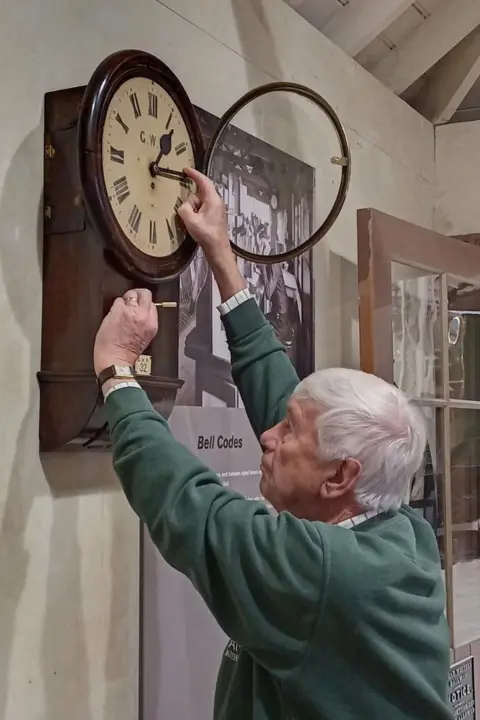 Steam Museum
Steam MuseumSwindon Steam Museum volunteer Peter Wheals has looked after its collection of 16 railway-related clocks for the past 14 years.
Many of them were used by passengers across the Great Western Railway network in decades gone by.
“It probably takes me a few hours to get through them all at this time of year, which is a bit time consuming,” he said.
“From time to time I take them home to my workshop, strip them down and take them back, and given some are at least 100 years old, they are generally accurate within a minute or two.”
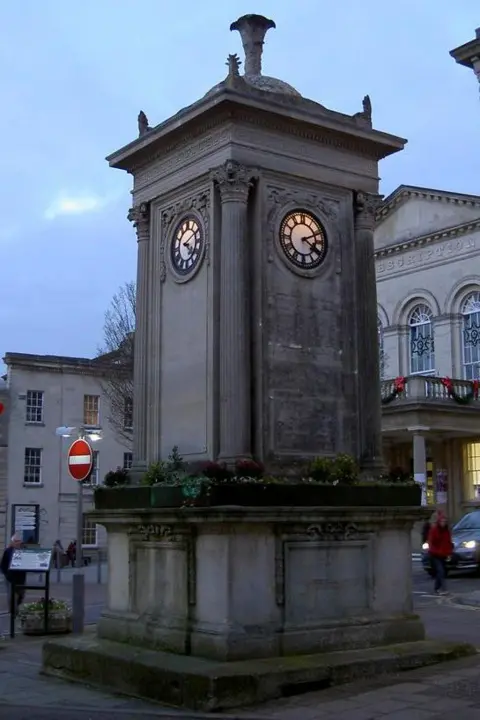 Geograph: Neil Owen
Geograph: Neil OwenIn Gloucestershire, Marcus Jelfs has driven from Upton St. Leonards to Stroud every week for the last five years to wind the Sim’s Clock, known locally as the Four Clocks.
Its construction was finished in 1921, after local shopkeeper William Thomas Sims left £1,000 to the town when he died in 1917.
Inside the tower is a large pendulum which slowly drops over the course of a week, before it has to be re-wound.
“I do cheat a little and change the time around 21:00 the night before, so it won’t inconvenience too many people,” Mr Jelfs said.
He added: “Most clocks are now electronically functioning and it certainly is nice to keep that history going.”

